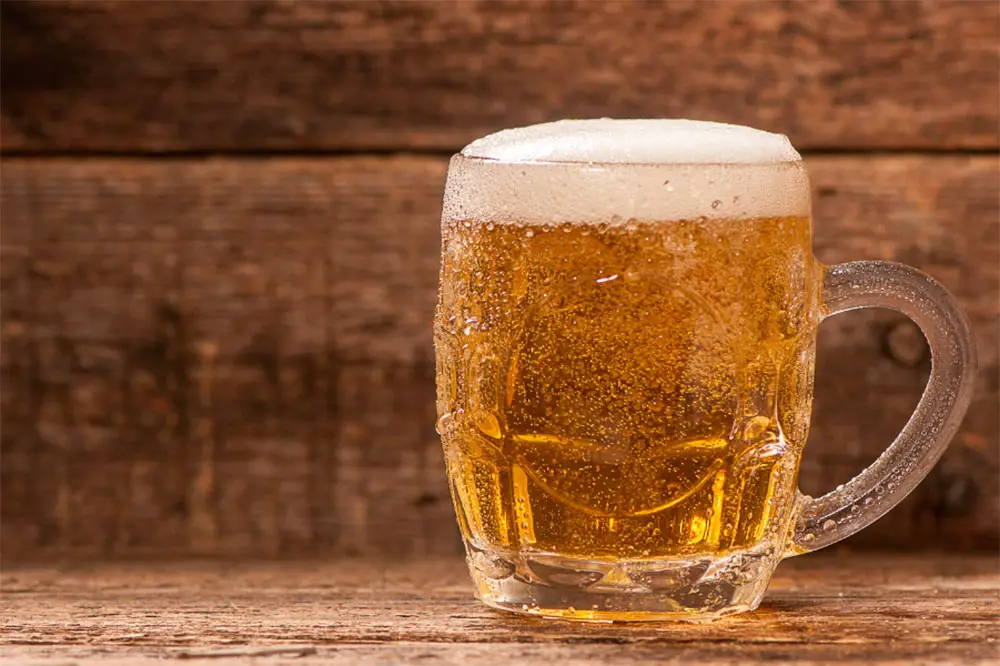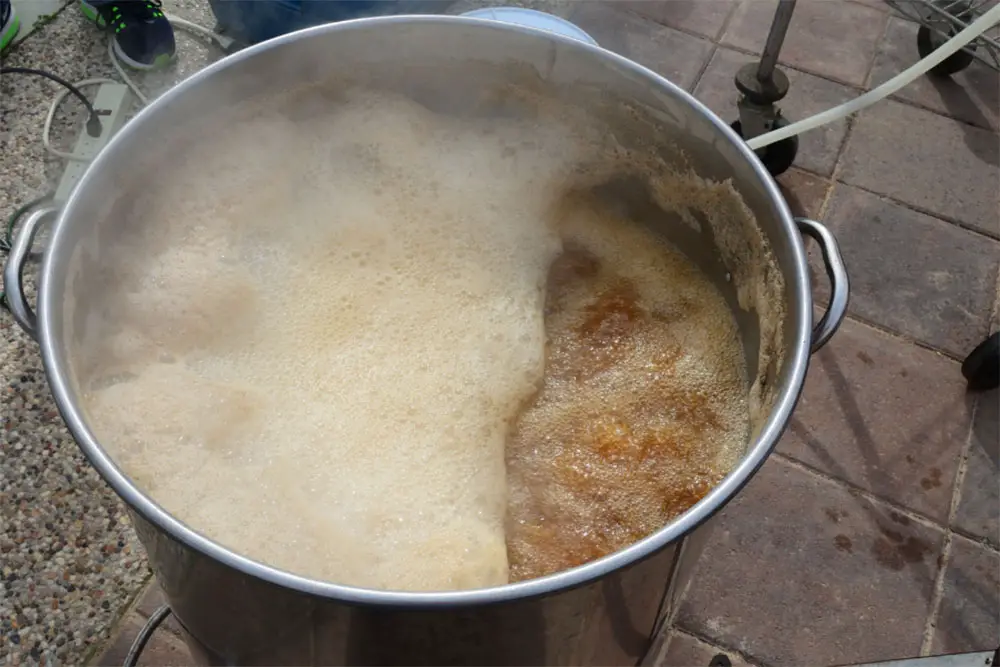Have you been shopping for a new beer and keep coming across the phrase dry beer but aren’t sure what it means? Well, you aren’t alone! Dry beer has been a success with consumers since the late 1980s but still leaves many puzzled. After all, how can a drink be dry?
Well, prepare to be amazed! Today we are here to tell you what dry beer is and why it’s become a success across the globe. Stay tuned for some surprising facts about dry beer and to potentially find your new beer of choice!
What Is Dry Beer?
For those unsure or in need of a little recap, let’s first take a look at what dry beer is! Put simply, it is a beer with little or no sweetness. In the world of beer, ‘dry’ applies to an absence of sweetness rather than the water content of the drink.

BEER DROP: Boxes of beer from Award-winning microbreweries → Join The Club
Dry beer tends to have no aftertaste. Instead, a strong, clean flavor, and a super refreshing finish has given dry beer its popularity! It’s been brewed since the 1980s, and there are no signs of it going out of fashion yet!
What About Extra Or Super Dry Beer?
You might also see the terms extra dry or super dry beer and be wondering, what is the difference? Well, it’s all to do with the brewing process. The fermentation process of dry beer is extended, allowing more natural sugars to break down and convert to alcohol. Those duped extra or super dry are beers that have had longer fermentation.
The result? Beer that is full of strength but fewer carbs for a fantastic taste!
History Of Dry Beer
Now that we have understood the terminology, let’s dive in further and look at the history of Dry Beer. It was first introduced in Japan, back in 1987, with brewers across Europe and North America then following suit.
The very first dry beer (Asahi Super Dry) was launched in Japan in 1987.
As soon as it launched, it dominated the Japanese market. The beer’s success was put down to it being produced based on a consumer research study, meaning Ashai Super Dry knew what their customers wanted and created a beer that would be well received and a success.
Other brands noticed the success and jumped on the bandwagon. Kirin, Sapporo, and Suntory International followed suit, and before long, dry beer had 40% of the Japanese beer market share at the time! Not bad for a beer that was unheard of until the late ‘80s!
The trend spread out of Japan, with several domestic US beer brands introducing dry brews to their customers in 1989.
And while dry beer became popular across the globe, it tastes differently depending on where you have it. In Japan, their dry beer has a higher alcohol content than regularly brewed beer, meaning you won’t need as much to dance the night away and stagger home! Whereas American dry beer does not have higher alcohol content.
American and Japanese brewers both emphasize the higher carbonation and clean aftertaste as a selling point of their beer, but the same cannot be said for Europeans. There doesn’t seem to be as much of a push in this belief regarding European-made dry beers.
Regardless of the taste and claims brewers made, it’s clear that dry beer is successful and has hit the consumer spot! Those searching for a new beer and taste have found that in dry beer, and it seems to be here to stay!
How Is A Dry Beer Brewed?
Now you might be wondering, how is a dry beer brewed? Well, there’s a special brewing process that takes place for dry beer to be created. Once brewed, the yeast eats the sugars in the mixture, creating the alcohol and CO2. The residual sugars left in the wort give the beer its sweet flavor.

There are a few different ways you can brew dry beer. Let’s take a closer look at them now!
High Yeast Strain
One method used features a high-performing yeast strain. The strain will ferment sugar more efficiently compared to ordinary yeast.
Low Mashing
Another method to brew dry beer involves mashing low, where the enzyme activity is encouraged to produce an extremely fermentable wort.
No Crystal Malts
Another version involves using little to no crystal malts. This method delivers a lighter alcohol content compared to dry beers brewed with robust yeast. The low malt method offers a beer with higher alcohol levels than regularly brewed beer!
Australian Dry Beers
Like the US and Canada, in the late 1980s, Australia joined the dry beer trend and has been brewing it ever since! One of the first Australian dry beers to hit the shelves was Hahn Superdry. It has since become the forerunner in dry beer, offering a crisp and dry taste to the country.
The beer is not only drier than others brewed but has a low-calorie content of just 0.7% per bottle! It’s a whopping 70% fewer calories than a regular beer, making it the perfect option for those looking to reduce their calorie intake!
The dry beer is also 99.99% sugar-free, the ideal choice for those after a lighter beer option.
Japanese Dry Beers
As mentioned earlier, Asahi Super Dry was the first dry beer in Japan (and the world), offering customers a clean and light flavor. The beer formulation was based on consumer research, where people wanted a beer that would work with delicate Japanese food without overpowering the palette.
The people asked, and Asahi Super Dry delivered!
American Dry Beers
The largest market to jump on the trend of dry beer was the American beer market. Several brewers began to brew their dry beers in the late 1980s. Initially, there was a lot of success, but as sales declined, big names like Budwiser discontinued their lines and began focusing on other products.
Today, you can still find dry beers in the US market! Brands like Sierra Nevada and Anchor Brewing still sell beers that have undergone a dry hopping brewing process. These are still widely available both in-store and online.
European Dry Beers
Like American beers, European dry beer leans towards the dry hopping process rather than the yeast activation in Japanese beer. Holsten Diat Pils remains a popular dry beer brand, where the German beer features a low sugar content.
Irish stouts such as Guinness are considered dry stouts, as they aren’t as sweet as other stouts. They are also incredibly popular, not just in Europe but across the globe. While they are considered dry, they are not light and crisp like Japanese dry beer.
What Does A Dry Beer Pair Well With?
Beer is a wonderful drink to pair with meals, thanks to its palate-cleansing ability! The distinct flavor highlights certain tastes in your meal, giving you a far more enjoyable experience than before. But what do you pair a dry beer with?
The crisp and clean body of flavor goes well with bold-food combinations like barbecue, curried dishes, and spicy stir-fries. You can also pair it with pizza, as the carbonation in the dry beer will balance the acidity of tomatoes and the heaviness of the cheese.
It can also be paired with light flavors, as it is traditionally done in Japan. Dry beer works well with sushi, shellfish, and fresh seafood, enhancing their natural flavors beautifully.
Final Word
And just like that, we have reached the end of our dry beer journey today! As you can see, the clean taste, no aftertaste, and low calorie and sugar content are just some of the reasons why the world loves dry beer!
A drink that’s been around since the 1980s, we strongly recommend that you get your hands on some dry beer and see what the fuss is about yourself. If you love a cold beer, you won’t be disappointed!
